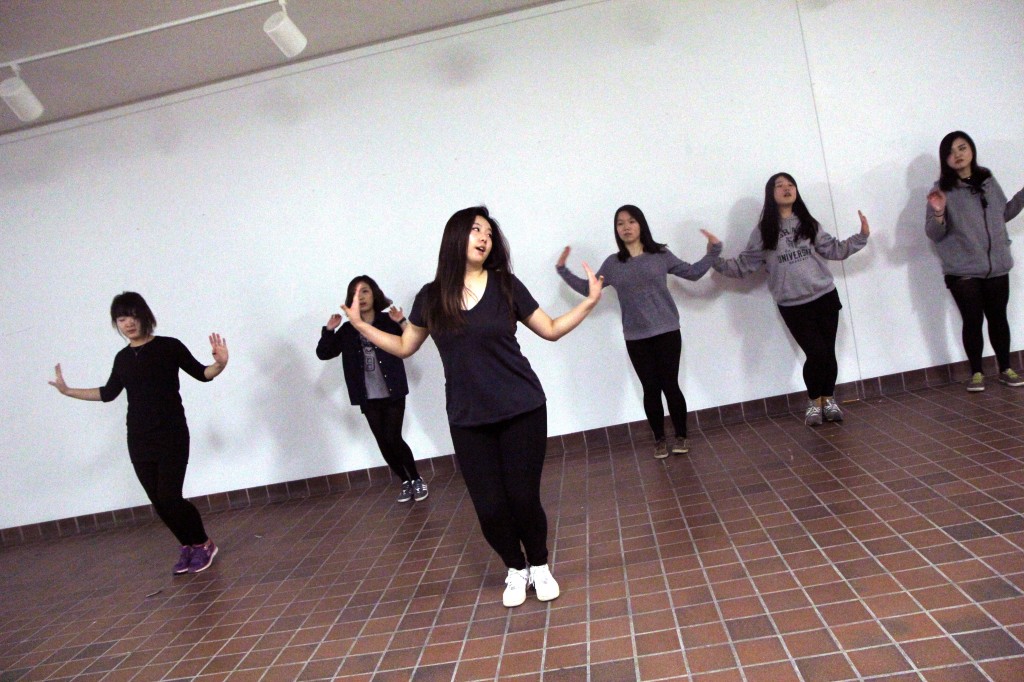
For DANCO, short for Dancing Koreans, Korean pop music has the potential to be the next big thing in America.
The dance team brings Korean pop music dance routines to Binghamton Korean festivals and other events.
“Koreans love partying, they love fun and K-pop is a part of that,” said Jin Choi, team president and a senior majoring in English.
Choi said she hopes the team will pick up steam this semester and garner more attention from people outside the Korean community. The 7-year-old, mostly female team features seven dancers. Two members recently graduated last fall, so the team is eager for new participants. DANCO doesn’t compete, and keeps to performing for fun at events within the Binghamton community.
“I’ve always wanted the team to grow big and be recognized throughout the University, not just the Korean students,” Jin said. “I want some diversity in it. K-pop is a part of Korean culture, so I would like to have a lot of people participate in it.”
The team performs routines for fun and to help spread cultural awareness. They also aim to increase diversity in the group itself and gain more members.
K-pop, short for Korean pop, originates from South Korea. The music embraces a mixture of genres, encompassing singing and rap, as well as dance-pop, hip-hop and electronic music. American popular music and Korean popular music may differ stylistically, but they still appeal to a similar audience.
“I think in style it’s the same as American music,” said Whee Sung Lee, a freshman majoring in psychology. “But people’s reaction to K-pop is very different. If one song goes viral in Korea, it is the song in Korea.”
Two songs the team plans on choreographing are “Bubble Pop!” by Hyuna and “Loving U” by Sistar. The group tends to pick a current chart-topping song in Korea. Due to the composition of the group being primarily female, they usually dance to a song written by a Korean “girl group,” or all-female band.
“It depends on the type of music we’re dancing to, but there’s a lot of hip-hop, jazz, basically everything combined together,” said Choi in regards to the group’s dance style.
K-pop stars, typically referred as idols, work in groups with an appointed leader acting as the face of the group. The culture of K-pop revolves around its own unique expressions, some of which come from traditional Korean honorifics, which denote the relationship between the speaker and listener.
K-pop is especially popular for its presence on social media such as Facebook and YouTube. “Gangnam Style,” the hit song by K-pop artist PSY, has the most YouTube views of all time.
The group is affiliated with the Binghamton University Korean Undergraduate Student Association (BUKUSA) and also works closely with the Korean American Student Association (KASA). They have danced both with and against KASA MODA dance team, another popular Korean dance troupe on campus.


